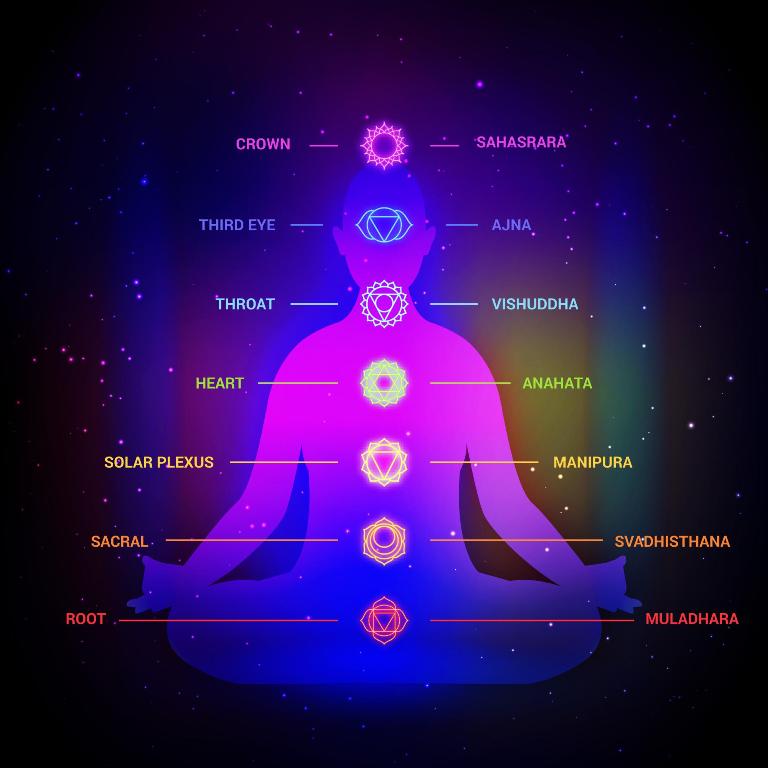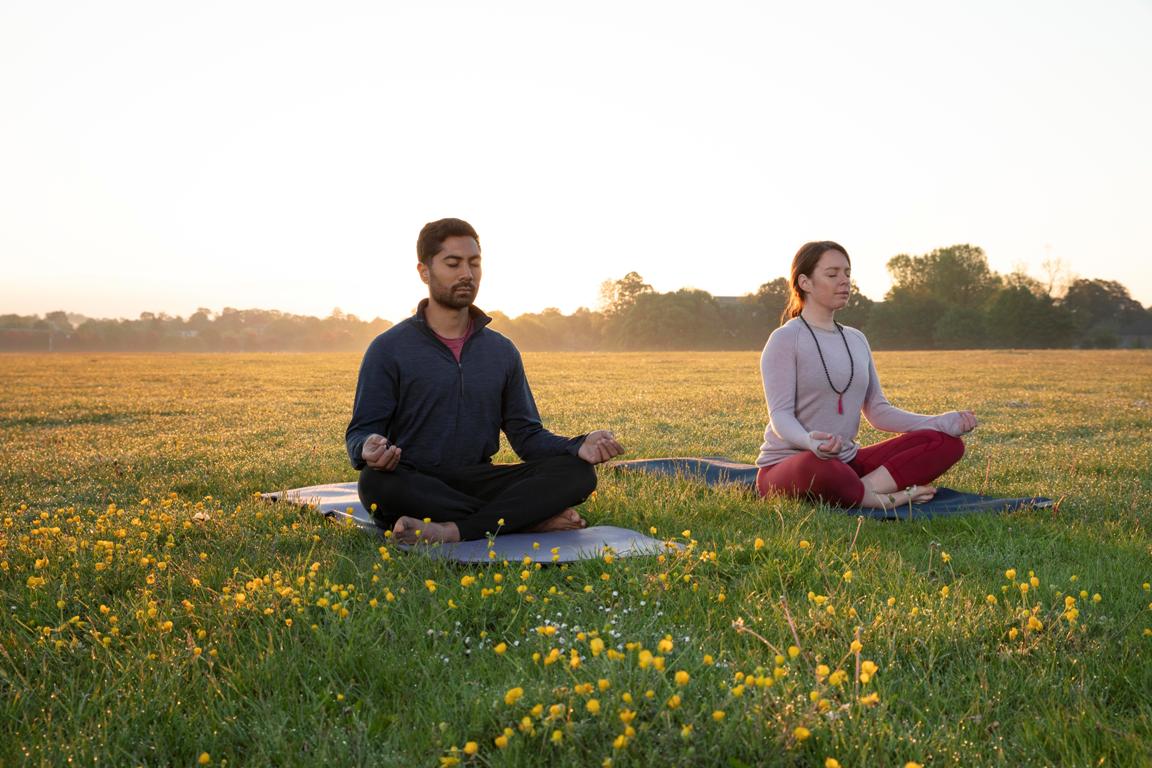Tantric meditation is an ancient practice that delves into the depths of human consciousness, connecting the mind, body, and spirit. This form of meditation has its roots in Tantra, a spiritual and philosophical tradition that dates back thousands of years. Unlike other forms of meditation, Tantric meditation emphasizes the awakening and harnessing of internal energy to achieve spiritual enlightenment.
Table of Contents
- Introduction to Tantric Meditation
- What is Tantric Meditation?
- The Origins and History of Tantric Meditation
- How Tantric Meditation Works: The Philosophy and Science
- The Benefits of Practicing Tantric Meditation
Key Takeaways
- Tantric meditation is a holistic practice that integrates the mind, body, and spirit.
- It has a rich history rooted in ancient spiritual traditions.
- The practice involves awakening internal energy, often linked to chakras.
- Tantric meditation offers a range of benefits, from physical well-being to spiritual growth.
Introduction to Tantric Meditation
Tantric meditation isn’t just another meditation technique; it’s a profound spiritual practice that seeks to harmonize every aspect of your being. With its origins deeply embedded in ancient cultures, it offers a unique pathway to self-discovery and enlightenment. To truly appreciate what Tantric meditation is, it’s important to explore its foundational principles and how it differs from other meditation practices.
What is Tantric Meditation?
Understanding the Practice
At its core, Tantric meditation involves the conscious awakening and direction of spiritual energy within the body. This practice focuses on achieving balance and unity between the masculine and feminine energies, known as Shiva and Shakti in Tantric philosophy. Through specific techniques, practitioners can cultivate this energy and elevate their state of consciousness.
Key Principles of Tantric Meditation
- Unity of Opposites: Tantric meditation is based on the concept of duality – the integration of opposing forces within us.
- Chakra Activation: The practice often involves the activation and balancing of chakras, the energy centers in the body.
- Breath Control: Breathwork, or pranayama, is a critical component of Tantric meditation, helping to guide and control the flow of energy.
Distinguishing Tantric Meditation from Other Practices
While meditation practices like mindfulness and Zen focus on stillness and the present moment, Tantric meditation actively engages the practitioner in a dynamic process of energy manipulation and spiritual exploration. It is not merely about quieting the mind but about consciously engaging with one’s inner power.
The Origins and History of Tantric Meditation
Ancient Roots of Tantric Meditation
The origins of Tantric meditation can be traced back to ancient India, where it was first developed as part of the broader Tantra tradition. This spiritual system emphasizes the interconnection of all life and the importance of rituals, symbols, and sacred practices in achieving spiritual liberation.
Development Across Cultures
As Tantric meditation spread from India to other parts of Asia, it evolved and integrated with local spiritual practices. In Tibet, for instance, it merged with Buddhist teachings to form what is known as Vajrayana, or Tibetan Buddhism, which places a strong emphasis on tantric practices.
Influence on Modern Meditation Practices
Today, *Tantric meditation* has influenced a wide range of spiritual and meditation practices around the world. Its techniques and philosophy have been incorporated into many modern approaches to mindfulness, yoga, and personal growth.
How Tantric Meditation Works: The Philosophy and Science
The Philosophical Underpinnings
At the heart of *Tantric meditation* lies a deep philosophical system that seeks to understand the nature of reality and the self. This philosophy is grounded in the belief that all existence is a manifestation of a single, universal consciousness, and that through meditation, one can directly experience this truth.
The Science Behind Tantric Meditation
From a scientific perspective, *Tantric meditation* is understood to influence the body’s energy systems, particularly the chakras. These energy centers are thought to regulate various physical, emotional, and spiritual functions. By practicing *Tantric meditation*, individuals can activate and balance these chakras, leading to improved well-being and spiritual awareness.
| Chakra | Location | Associated Function |
|---|---|---|
| Root Chakra (Muladhara) | Base of the spine | Grounding and stability |
| Sacral Chakra (Svadhisthana) | Lower abdomen | Creativity and sexuality |
| Heart Chakra (Anahata) | Center of the chest | Love and compassion |
Breathwork and Visualization Techniques
Two key techniques in *Tantric meditation* are breathwork and visualization. Breathwork involves controlled breathing patterns that help regulate the flow of energy within the body. Visualization, on the other hand, involves mentally creating images and symbols that represent different aspects of the self and the universe, aiding in the focus and direction of energy.

The Benefits of Practicing Tantric Meditation
Physical Benefits
*Tantric meditation* offers a range of physical benefits. These include improved energy levels, enhanced flexibility and balance, and a strengthened immune system. Regular practice can also lead to better sleep and reduced physical tension.
Mental and Emotional Benefits
On a mental and emotional level, *Tantric meditation* helps reduce stress and anxiety, increase focus and clarity, and promote emotional healing. It encourages a deeper connection with oneself and fosters a greater sense of inner peace and contentment.
Spiritual Growth
Perhaps the most profound benefit of *Tantric meditation* is its ability to facilitate spiritual growth. Through regular practice, individuals can experience a deeper connection with the divine, heightened states of consciousness, and a more profound understanding of their true nature.

This concludes Part 1 of the article. The following section will delve deeper into advanced techniques, common misconceptions, and frequently asked questions about *Tantric meditation*.
Common Misconceptions About Tantric Meditation
Tantric Meditation is Not Just About Sexuality
One of the most common misconceptions about *Tantric meditation* is that it is solely focused on sexual practices. While Tantra does include elements of sacred sexuality, *Tantric meditation* encompasses a much broader spiritual practice. The core of *Tantric meditation* is about achieving union with the divine, transcending the physical realm, and connecting with deeper aspects of the self.
It’s Not a Quick Fix
Another misconception is that *Tantric meditation* can provide immediate results. Like any other form of meditation, it requires consistent practice and patience. The benefits of *Tantric meditation* unfold gradually as you deepen your practice and understanding of its principles.
Only for the Spiritually Advanced?
Many believe that *Tantric meditation* is only for those who are already spiritually advanced or initiated into esoteric practices. However, *Tantric meditation* is accessible to anyone who is willing to learn and practice. Beginners can start with simple techniques and gradually explore more advanced practices as they become more comfortable.

How to Start Practicing Tantric Meditation
Preparing Your Mind and Space
Before you begin practicing *Tantric meditation*, it’s essential to prepare both your mind and your environment. Choose a quiet space where you won’t be disturbed, and create an atmosphere that is conducive to meditation. You might want to use candles, incense, or calming music to set the mood. Mentally, approach the practice with an open and curious mind, free from preconceived notions.
Step-by-Step Guide to Basic Tantric Meditation
- Find a Comfortable Position: Sit in a comfortable position, either on the floor or in a chair, with your spine straight and your hands resting on your knees.
- Focus on Your Breath: Begin by taking deep, slow breaths. Inhale deeply through your nose, hold the breath for a few seconds, and then exhale slowly through your mouth.
- Visualize Energy Flow: As you breathe, visualize energy flowing through your body, from the base of your spine to the top of your head. Imagine this energy as a warm, glowing light.
- Chant a Mantra: Choose a mantra that resonates with you, such as “Om” or “Aham Prema” (I am love). Repeat this mantra silently or aloud, allowing it to guide your meditation.
- Focus on Your Chakras: Gradually shift your attention to each chakra, starting from the root chakra and moving upward. Visualize each chakra as a spinning wheel of light, balanced and open.
- Close with Gratitude: End your meditation by expressing gratitude for the experience. Take a few moments to sit quietly and reflect on any insights or sensations you experienced during the meditation.
Tips for Beginners
- Start with short sessions, gradually increasing the duration as you become more comfortable.
- Be patient with yourself. *Tantric meditation* is a journey, not a destination.
- Keep a journal to record your experiences and any insights you gain from your practice.
- Consider seeking guidance from a qualified teacher if you’re new to Tantric meditation.
Recommended Resources and Tools
To deepen your practice, you might want to explore additional resources such as books, online courses, and guided meditations. Some popular books on *Tantric meditation* include “The Heart of Tantric Sex” by Diana Richardson and “Tantra Illuminated” by Christopher Wallis. Online platforms like Insight Timer offer a variety of guided meditations that can help you get started.
Advanced Techniques in Tantric Meditation
Exploring Deeper Practices
Once you’ve established a basic *Tantric meditation* practice, you might be ready to explore more advanced techniques. These practices often involve the use of more complex visualizations, breath control, and the integration of rituals and symbols. Advanced Tantric meditation can also include partner practices, where two individuals meditate together to harmonize their energies and achieve a deeper connection.
Incorporating Mantras, Mudras, and Rituals
*Tantric meditation* often involves the use of mantras (sacred sounds or phrases), mudras (hand gestures), and rituals to enhance the meditation experience. These elements serve to focus the mind, direct energy, and connect the practitioner with the divine. For example, the mantra “Om Mani Padme Hum” is commonly used in Tibetan Tantric practices to invoke compassion and spiritual awakening.
Integrating Tantric Meditation into Daily Life
*Tantric meditation* isn’t limited to your meditation sessions; it can be integrated into every aspect of your daily life. Practicing mindfulness, maintaining a connection with your inner energy, and embracing a Tantric approach to relationships and self-care are ways to live a more balanced and spiritually connected life. This holistic approach can lead to profound transformations, both within yourself and in your interactions with the world around you.
Frequently Asked Questions About Tantric Meditation
What is the difference between Tantric and other types of meditation?
*Tantric meditation* is distinct from other forms of meditation in that it focuses on the awakening and directing of spiritual energy within the body, often through specific techniques like breath control, visualization, and the activation of chakras. While other forms of meditation, such as mindfulness or Zen, focus on quieting the mind and being present, *Tantric meditation* actively engages with one’s inner energy and consciousness.
Can anyone practice Tantric Meditation, or is it for specific people?
Yes, anyone can practice *Tantric meditation*. It is accessible to people of all backgrounds, regardless of their previous experience with meditation or spiritual practices. While the techniques can be complex, beginners can start with basic practices and gradually explore more advanced aspects of Tantra as they become more comfortable.
Is Tantric Meditation always connected to sexuality?
No, *Tantric meditation* is not solely focused on sexuality. While some Tantric practices do involve sacred sexuality, *Tantric meditation* as a whole encompasses a wide range of spiritual practices aimed at achieving enlightenment and self-realization. The sexual aspect is just one component of a much broader and more complex spiritual tradition.
How long does it take to see the benefits of Tantric Meditation?
The benefits of *Tantric meditation* can vary depending on the individual and the consistency of their practice. Some people may experience benefits within a few weeks of regular practice, while for others, it may take several months. The key is to maintain a consistent practice and approach the meditation with an open and patient mindset.
Do I need a teacher to learn Tantric Meditation?
While it is possible to learn *Tantric meditation* on your own through books and online resources, many people find it beneficial to work with a qualified teacher, especially when exploring more advanced techniques. A teacher can provide personalized guidance, help you navigate challenges, and deepen your understanding of the practice.
What are the potential challenges of practicing Tantric Meditation?
Some of the challenges associated with *Tantric meditation* include maintaining a consistent practice, overcoming misconceptions about the practice, and navigating the more complex aspects of Tantra. Additionally, the deep introspection and energy work involved in *Tantric meditation* can sometimes bring up unresolved emotions or experiences, which can be challenging to process. However, with patience and the right support, these challenges can be overcome, leading to profound personal growth.






